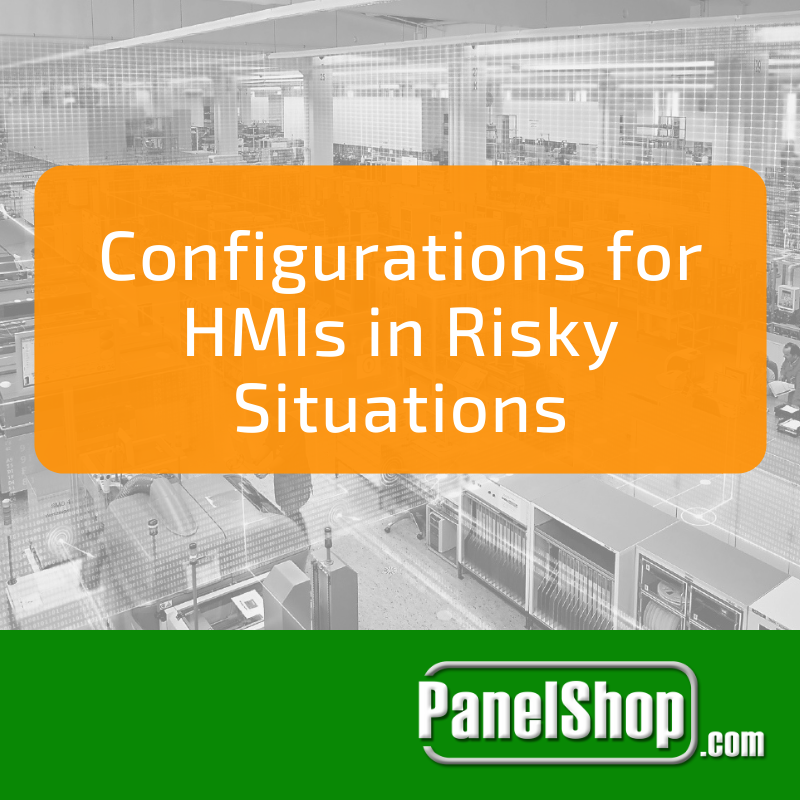 Human Machine Interfaces (HMIs) are vital for streamlined monitoring and control of any Control System whether it’s based on a small-scale or covers multiple geographic locations. Communication is necessary nonetheless, irrespective of the scope of the control system as it ensures transparency, quick reaction and decision-makers to untie themselves of any particular physical location.
Human Machine Interfaces (HMIs) are vital for streamlined monitoring and control of any Control System whether it’s based on a small-scale or covers multiple geographic locations. Communication is necessary nonetheless, irrespective of the scope of the control system as it ensures transparency, quick reaction and decision-makers to untie themselves of any particular physical location.
In addition, various automation systems should not only have strong inhouse intercommunication portals but support the latest wave of devices such as smartphones and tablets. The reasons behind this is the quick adoption of such devices by operations personnel, which makes it easier for them to acquire information and thus raise their productivity.
The hardware and software of today have made ample technological advances to support such networked-expansion, allowing remote servers to interact with HMIs and provide a smooth stream of data to all devices. Typically, the use of HMIs is limited to inhouse monitoring and control of devices such as PLCs, Drives and Switches, but their integration with the outside world has slowly become an unavoidable requirement. Modern PC-based HMIs solve this problem through constant back and forth communication with all interlinked devices.
The three main ways of achieving these goals are:
Direct Access
Modern PCs are already embedded with hardware which can be used for such communications, if coupled with properly designed HMI software. The simplest and most well-established way of doing so is through an HMI’s web server. The procedure is simple; the HMI is connected to the internet through an ethernet connection. The company’s data and functions are available through web pages and technologies such as the cloud, allowing other mobile devices to access them through simple addresses. Once connected, commands can be sent and data can be viewed through the device.
Security is a rising concern for such open communication but web server technologies such as Apache HTTP and Microsoft IIS meet the latest security standards such as SSL and HTTPS security to guarantee the integrity of user data. As an advancement, user rights can be established which can provide greater security and reduction in cases of misuse of authority. For instance, an automation engineer who is limited to a particular asset should have lesser rights than an engineer who needs to manage the synchronization of various control systems spread throughout the plant.
The internet along with technologies such as HTML5/CSS3 and Cloud based storage makes the deployment and management of such HMIs extremely fluid. However, the drawback also derives from this very advantage as over-reliability on the internet can lead to a halt in operations in case of network breakdowns.
Onsite IT
A more expensive but reliable approach is the use of onsite IT hardware and software. This option provides more power and flexibility to distribute data across multiple devices but requires specialized hardware and software along with constant maintenance. Multiple HMIs within a plant are connected through ethernet ports, and form an intranet which has all the functionalities of an internet, but on a local level. The information can be accessed in the same way as before through various devices, but this time with greater security and a more controlled manner.
As it may be obvious this option requires setting up an internal IT network that extends to all corners of the plant and any associated offices. The intranet would ideally have to be location independent and form a connection between all existing company assets, enterprise or manufacturing ones.
Security would be one of the least concerns of the network, but it would require a high level of maintenance and constant service to operate without any interruptions.
The Cloud
The previous two methods have made use of a web-browser to access pages that contain automation functions. However, the entire picture would change if Cloud technologies were used to handle the bulk of information flow, allowing devices to interact in a more stable, reliable and resourceful manner. Multiple redundant connections would allow each device to connect to the cloud and access HMI functions through smartphone apps. These apps would reflect changes across databases and spreadsheets stored on the cloud, which would in turn be reflected onto the industrial hardware in place.
Cloud systems are highly flexible, affordable and extremely secure. Examples include Amazon Web Services and Microsoft Cloud, which use a high level of virtual and physical security and a string of backup mechanisms to ensure continuous operations in the worst of cases.
A cloud system is therefore the latest and most viable solution to HMI communications with remote devices. The widespread availability of internet, whether it’s in the form of 4G cellular networks along with powerful mobile devices have transformed it into an industrial technology, which would easily establish itself over the decades to come.
Creating Your Custom HMI Panels
If you need affordable HMI panels for your next project, our experienced staff can help you from concept to completion. PanelShop.com takes the pain out of control panel building by making the process streamlined and simple. Trust our engineers and electricians to help you achieve custom HMI panels for your next project.





